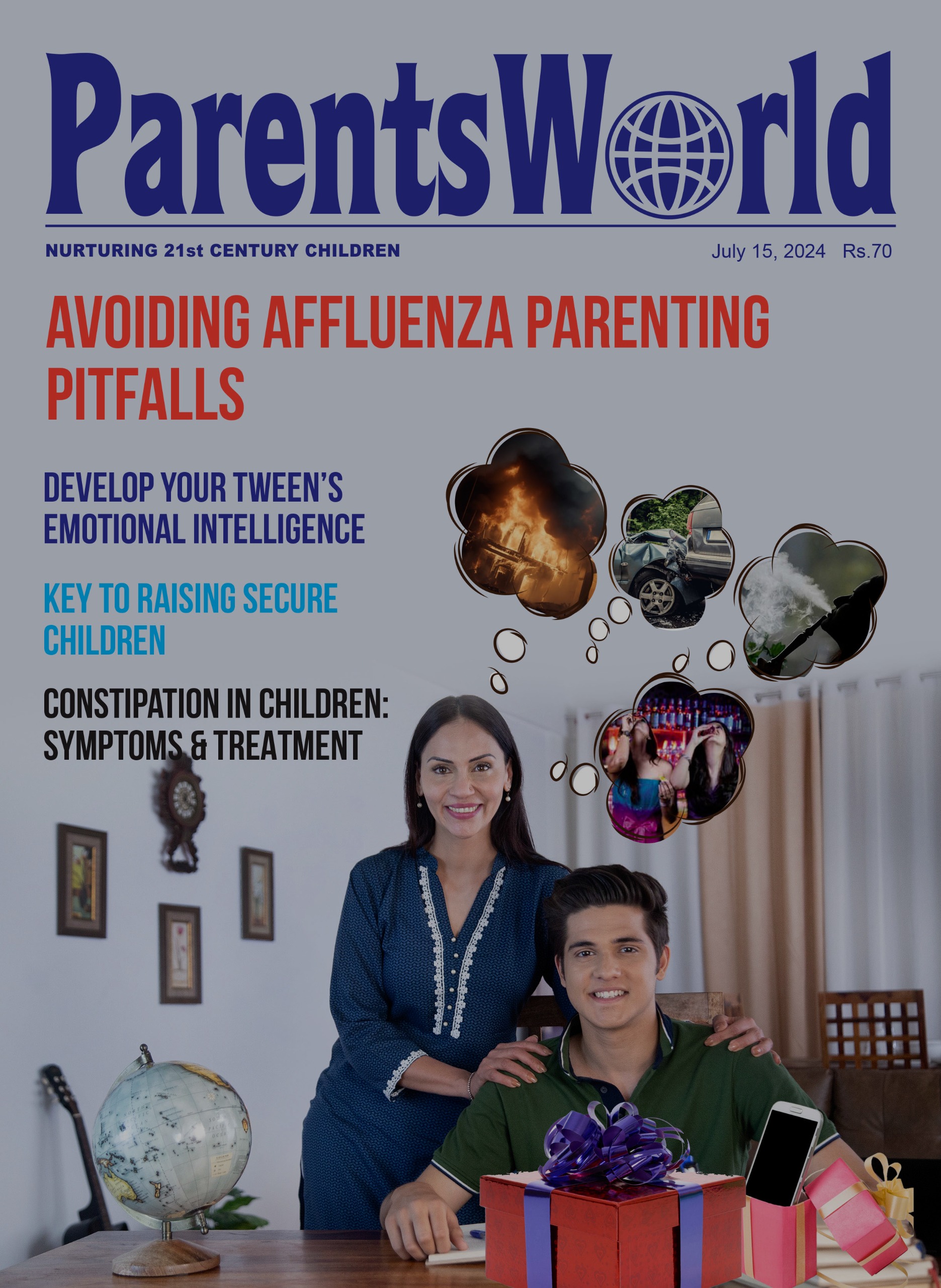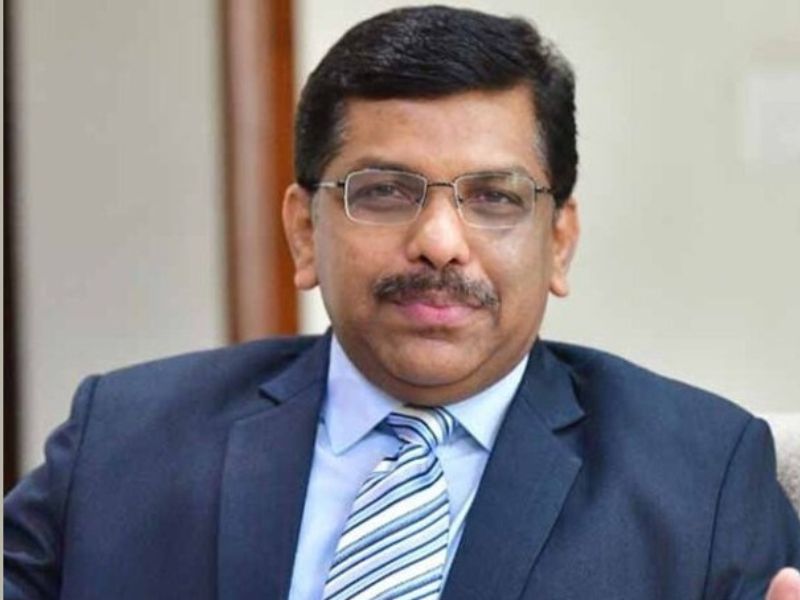With the spectre of PISA 2009 when Indian 15-year-olds were ranked second last from among 74 participating countries looming in the background, at the last minute the BJP government at the Centre withdrew India’s participation in PISA 2022, which was written by 690,000 students from 81 countries writes Dilip Thakore
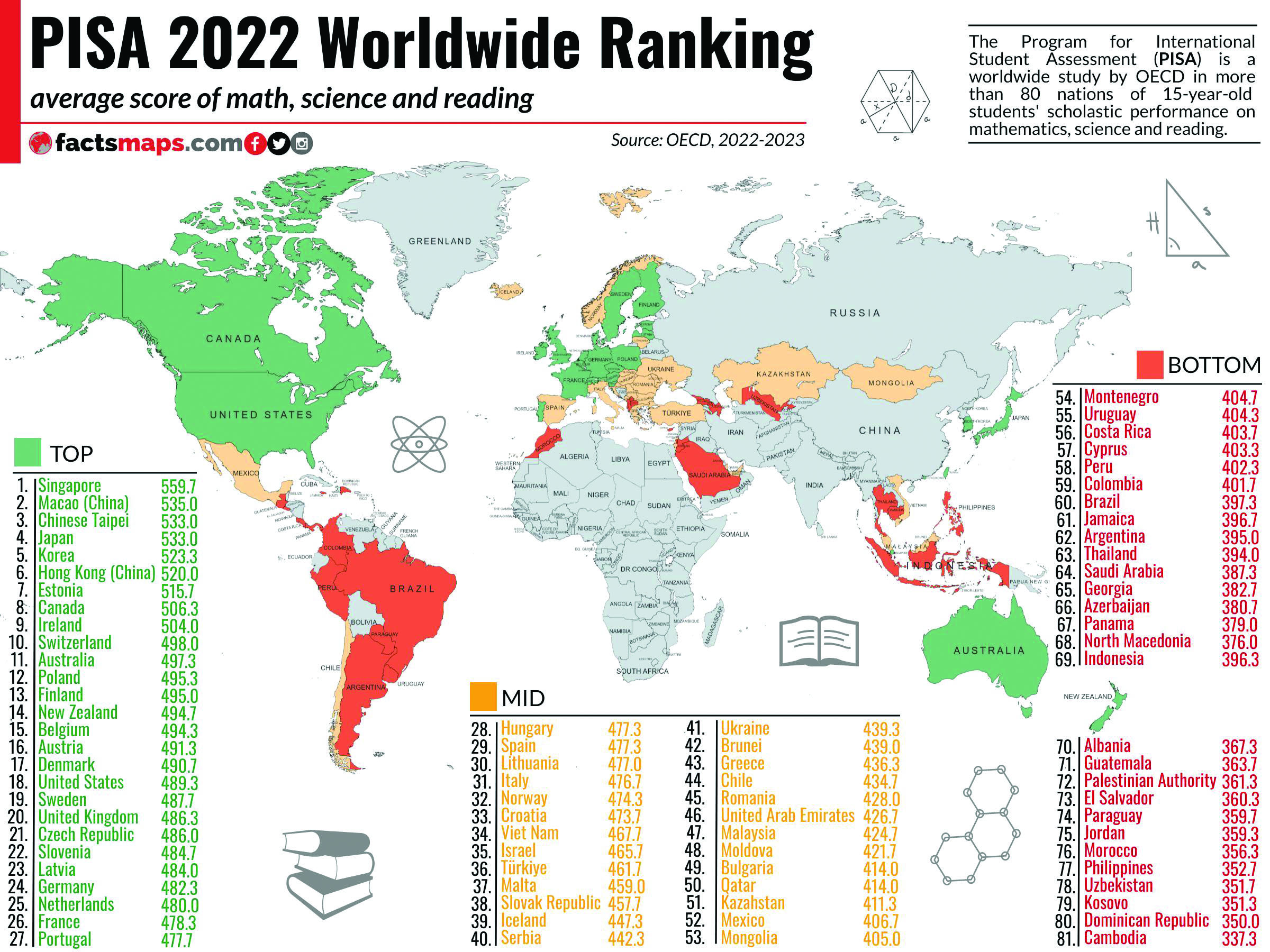
PISA 2022 Worldwide Rankings: Indian participation MIA
There was a growing sense of inevitability about it. At the last minute India withdrew from the transnational PISA (Program for International Student Assessment) 2022, results of which were declared on December 5, 2023. Organised by the Directorate of Education and Skills of OECD (Organisation for Economic Cooperation & Development), a group of developed industrial countries, PISA 2022 tested the capabilities of 15-year-olds representing over 80 countries around the world in reading, science and maths through a common exam. Around 690,000 students from 81 participating countries wrote PISA 2022. The Indian contingent of students was MIA (missing in action).
For several years until the millennium year, the Directorate of Education within OECD used to measure the education progress of countries using the metric of average years of schooling of 15-year-olds. But this was found to be unsatisfactory because education standards differed in countries. Therefore in the new millennium, the Directorate devised a common test to measure the reading, maths and science attainments of high school children and rank countries according to outcomes. Since then, PISA, held every three years, has acquired incremental international popularity.
In 2009 shortly after the Congress-led UPA government was re-elected to power at the Centre, Union HRD (education) minister Kapil Sibal, perhaps enthused by the large number of students being awarded 95 percent-plus average scores in class X and XII school-leaving exams conducted by India’s 33 examination boards (including the national CBSE and CISCE), ordered India’s participation in PISA 2009. India’s representative batch of 5,000 15-year-olds selected from Tamil Nadu and Himachal Pradesh — reputedly India’s most educationally advanced states — was ranked #73, higher than only one country, Kyrgyzstan (pop. 6 million).
When the results of PISA 2009 were released, the plain truth that our K-12 education system is hopelessly obsolete and addicted to rote learning and memorization pedagogies became manifest. PISA tests the comprehension, critical thinking and knowledge application skills of high schoolers.
With egg on its face as media across the country headlined the pathetic performance of the India cohort of 5,000 students in PISA 2009, India skipped PISA 2012 and 2015. The then UPA government blamed ‘out of context’ questions for boycotting PISA. However in 2015, the Union government introduced its own National Achievement Survey (NAS) conducted by NCERT (National Council for Educational Research & Training), an autonomous subsidiary of the Union education ministry. In NAS 2015 over a period of five months, 277,416 class X students of 7,216 schools affiliated with two pan-India and 31 state examination boards were administered “standardised and context-free objective tests using uniform tools” in five subjects (English, maths, science, social science and the dominant state language) by the Delhi-based NCERT.
The outcome of NAS 2015 inspired by PISA proved a chastening experience. The average score of students in English, maths, science, and social science was less than 50 percent with students from CISCE (Council for the Indian School Certificate Examinations) schools faring best (see EW cover story June 2016 https://www.educationworld.in/educationworld-archive/?_sfm_archive_year=2016).
“In the NAS survey of class X students, the average national score of all the 2.70 lakh children was a disappointing less than 50 percent in all tested five subjects. The results of the survey also indicate that students of private, urban unaided CISCE and CBSE schools exhibit better learning achievements than private aided schools, and students of private aided schools fared better than government schools. The average low achievement is an outcome of lack of conceptual clarity and understanding of the subjects tested… The low average score of less than 50 percent of this nationally representative sample class X students also indicates the need to review and reform syllabi and curriculums on the basis of NAS 2015 results,” Prof. Sreekanth (no initials), head of the education surveys department at NCERT at that time, informed EducationWorld.
With NAS 2015 confirming “the lack of conceptual clarity” and deep understanding of subjects tested, the newly-elected BJP-led NDA government, which had ordered NAS 2015, prudently side-stepped PISA 2018. However after the BJP was swept to power again in 2019, in a show of euphoric bravado, Union education minister Prakash Javadekar declared the government’s intent to participate in PISA 2021 (postponed to 2022 because of the global Covid-19 pandemic). But prior to that, he ordered NAS 2021 to ascertain the condition of Indian K-12 education again.
Unsurprisingly, the results of NAS 2021 which also tested children in classes III, V, VIII besides class X, were not any better. The learning levels of 3.4 million students from 118,274 schools across 720 districts in all 36 States/UTs were assessed. However this time round, measurement of student competencies by school exam boards — which embarrassingly for the government in NAS 2015 indicated that students of schools affiliated with the private CISCE exam board fared better than those from CBSE, a subsidiary of the education ministry — was dropped. Instead, representative batches from all states and Union territories were tested. But again results were disappointing.
According to NAS 2021, students’ learning outcomes declined as they progressed into higher classes. The national average in the five subjects (environment sciences was added) for which they were tested, reduced from 59 percent in class III to 49 percent in class V, to 41.9 percent in class VIII and 37.8 percent in class X. The performance of this nationally representative sample of students recorded a decline in almost all subjects. In mathematics, the national average of 57 percent in class III dropped to 32 percent in class X. The average scores of class X students (from a maximum 500) in maths was 220; science: 206; social sciences: 231; English: 277 and modern Indian languages: 260. These dismal scores have probably gone from bad to worse following the prolonged closure of schools — perhaps the longest worldwide during the Covid-19 pandemic (2020-21).
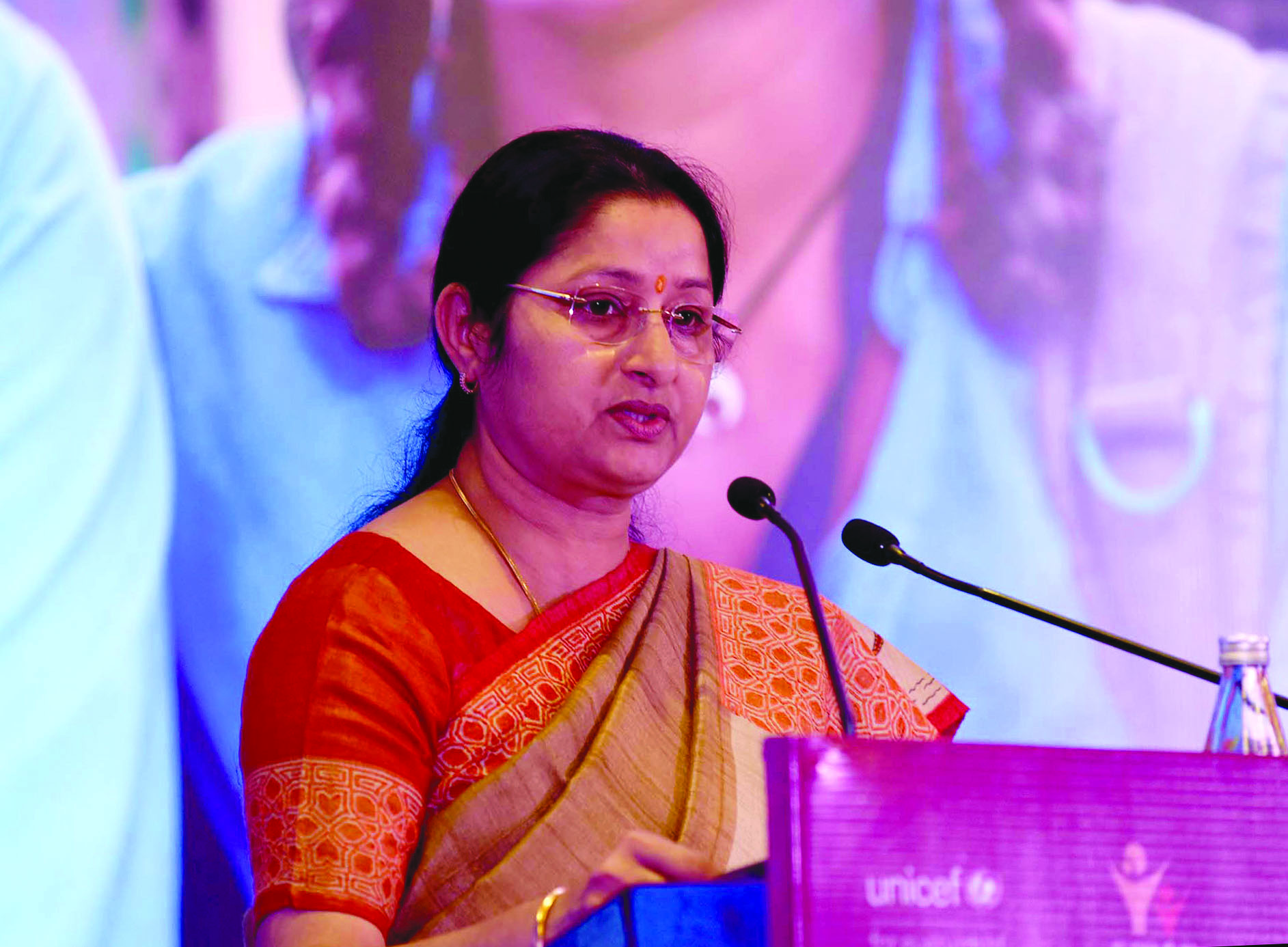
Annapurna Devi: pandemic cop out
In the circumstances, it’s hardly surprising that the BJP government at the Centre which has often been accused of neglect of public education, opted out of PISA 2022 citing Covid pandemic disruption as the excuse. “The Government of India had decided to participate in the PISA 2022 to be conducted by the Organisation for Economic Cooperation and Development (OECD). However, the Government of India relooked at the issue of participation of India in PISA 2022 in view of the impact of the Covid pandemic and the stressful situation for children arising due to closure of schools for a long period in the country,” said Annapurna Devi, Union minister of state for education in a written reply to a question posed in Parliament on July 18, 2022.
 Given that India currently (grudgingly) hosts the world’s largest child and youth population estimated at 500 million and is looked upon as a potential source of skilled managers and workers for developed industrial nations whose populations are declining, India’s no-show at PISA 2022 has come as disappointment to communities around the world. When the new BJP government declared its intention to participate in PISA 2022, the decision was welcomed by the World Bank.
Given that India currently (grudgingly) hosts the world’s largest child and youth population estimated at 500 million and is looked upon as a potential source of skilled managers and workers for developed industrial nations whose populations are declining, India’s no-show at PISA 2022 has come as disappointment to communities around the world. When the new BJP government declared its intention to participate in PISA 2022, the decision was welcomed by the World Bank.
“This rethinking is because the education system is changing. It is a recognition by India that PISA now can actually help in improving the education system. For example, Vietnam chose to enter PISA and the diagnostic helped it to understand what was wrong with its system. Today, Vietnam’s PISA numbers are equivalent to Finland and top nations in the world. Today, India as a nation is aiming for that global benchmark, so it has no issue with taking on a test like PISA. It is a reflection of India’s own strength,” said Junaid Ahmad, the World Bank’s India representative in an interview to the Times of India in February 2019 after the re-elected BJP government announced its intent to sign up a representative batch of Indian children for PISA 2021/22.
However, it’s noteworthy that the government’s turnaround on excuse of “the impact of the Covid pandemic and the stressful situation for children” was not peculiar to India. According to the globally respected weekly The Economist, school closures — “the greatest disruption to education since the Second World War” — affected 80 percent of in-school children worldwide. But this didn’t prevent student cohorts from 81 countries writing PISA 2022. On the contrary, their governments were keen to ascertain the degree of learning loss suffered by children during the pandemic shutdown of education institutions to recover lost ground through remedial education programmes. And surprisingly despite shorter education lockdowns and superior learning-from-home digital technologies, 15-year-olds from the OECD founder countries (Western Europe and the US) fared worse than their counterparts in South-east Asian countries.
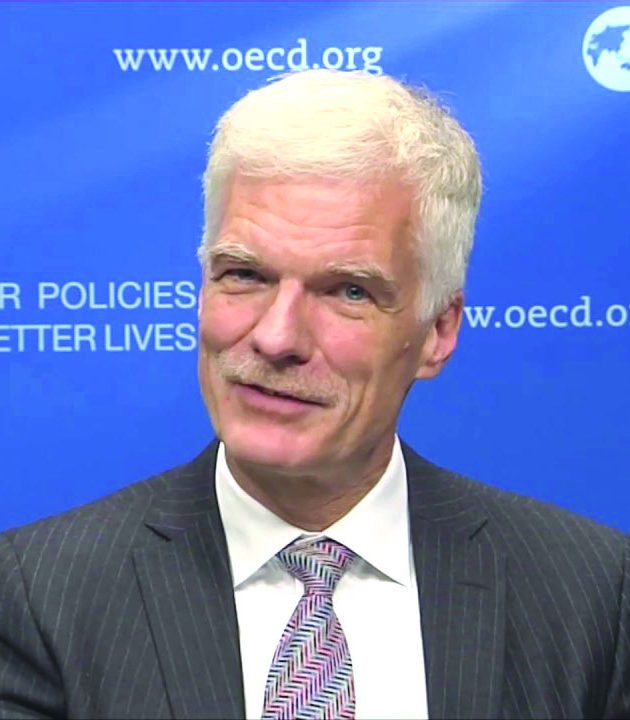
Schleiser: 15-year-olds from 81 countries
“It’s a pity that India didn’t participate in PISA 2022 which attracted participation of high school students from 81 countries. Because of the Covid pandemic which shuttered schools worldwide for varying periods, we delayed this test scheduled for 2021 by one year. And India had confirmed that a sample of 15-year-olds from Kendriya Vidyalayas and Chandigarh would write PISA 2022. Participation in PISA is important because it enables every participant country to learn where its high schoolers stand in an increasingly globalising world. The goal of PISA when it was introduced was to help schools and policy makers shift from looking inward at each other within the same education system to looking outward: to teachers, schools and policy makers across the world. Unlike traditional assessments, PISA assesses not just students’ ability to reproduce learned material but also their capacity to apply knowledge creatively in novel scenarios, think critically across disciplines, and demonstrate effective learning strategies. By emphasising these skills, PISA aims to equip students with the ability to navigate an ever-evolving world,” says Andreas Schleiser, a physics and math alum of Hamburg and Deakin (Australia) universities, former director of the Amsterdam-based International Association for the Evaluation of Educational Achievement (IEA) and currently Director of Education and Skills, OECD.
The BJP government’s excuse of crying off PISA 2022 citing the prolonged shutdown of schools countrywide because of the pandemic is untenable because the lockdown of India’s schools for an average of 82 weeks was an egregious error of its own making. Most other countries imposed school closures of a much shorter duration after it was well-established that children were not especially vulnerable to the Covid-19 virus.
After lockdown of the economy including all education institutions on March 25, 2020, EducationWorld was the first media publication to draw attention to the utter lack of digital learning opportunities for the vast majority of the world’s largest population of children, and recommend phased re-opening of education institutions countrywide as early as possible. In July 2021, after all education institutions had been shut down for 56 weeks, your editors wrote a detailed eight-page cover feature titled ‘Why Schools Should Reopen Right Now’ (https://www.educationworld.in/why-indias-schools-should-reopen-right-now/). Citing a detailed Unesco study titled Education from Disruption to Discovery (2021), we highlighted that “the prolonged closure of primary-secondary schools in India of 56 weeks and counting, is in sharp contrast to Russia’s 13 weeks, China’s 27, UK 27, France 12, South Africa 37 and Tanzania 15. Only the US (56 weeks) and Brazil (53) have shut their schools for as long”, noting that the US and European countries were far ahead of India in terms of children’s access to internet connectivity and digital learning devices. The advice to restart schools “right now” backed by eminent educationists Dr. Geeta Kingdon, chair of education economics and international development at University College, London and Dr. Swati Popat Vats, president of the Early Childhood Association (ECA) and a pioneer crusader for universal formal ECCE (early childhood care and education), among others was ignored by the Union education ministry, educationists, and education policy formulators at the Centre and in the states.
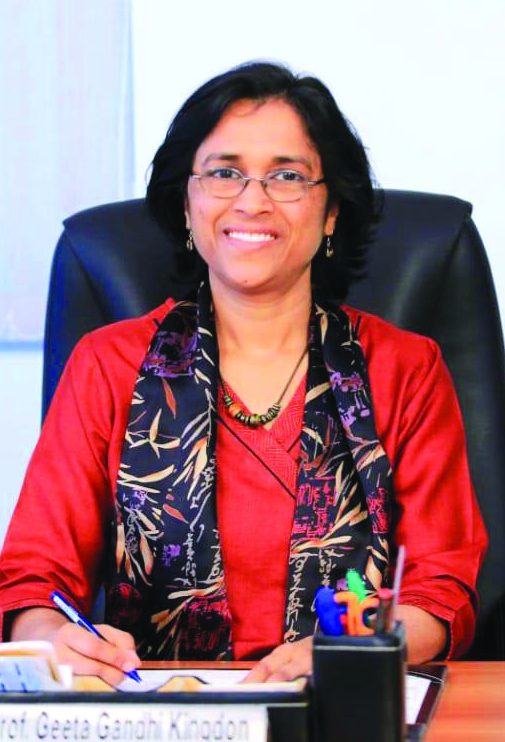
Kingdon: mirror opportunity
Again in February 2022 by which time the nationwide closure of education institutions had extended to 82 weeks and the National Achievement Survey conducted by NCERT in November 2021 revealed poor learning outcomes especially of class X 15-16 year-olds (as indicated above), in a follow-up lead feature, your editors suggested declaration of 2021-22 as a “zero academic year”, i.e, all school students countrywide should repeat the year’s syllabus and curriculums to build a strong foundation for future learning (https://www.educationworld.in/declare-2021-22-zero-academic-year/). Unusually, Summiya Yasmeen, author of the special report feature titled ‘Education Emergency: Declare 2021-22 Zero Academic Year’ (https://www.educationworld.in/declare-2021-22-zero-academic-year/) quoted your editor as stating: “The heavens won’t fall if youngest children relearn the 2021-22 syllabus to build a strong foundation for future learning. It’s certainly a better option than routinely promoting children to the next higher class where the vast majority of children will experience severe learning difficulties and stress. Extraordinary challenges require extraordinary response to bridge the huge, not yet formally calculated, almost two years’ learning loss of the pandemic era.” Again this proposal was ignored by government and academia.
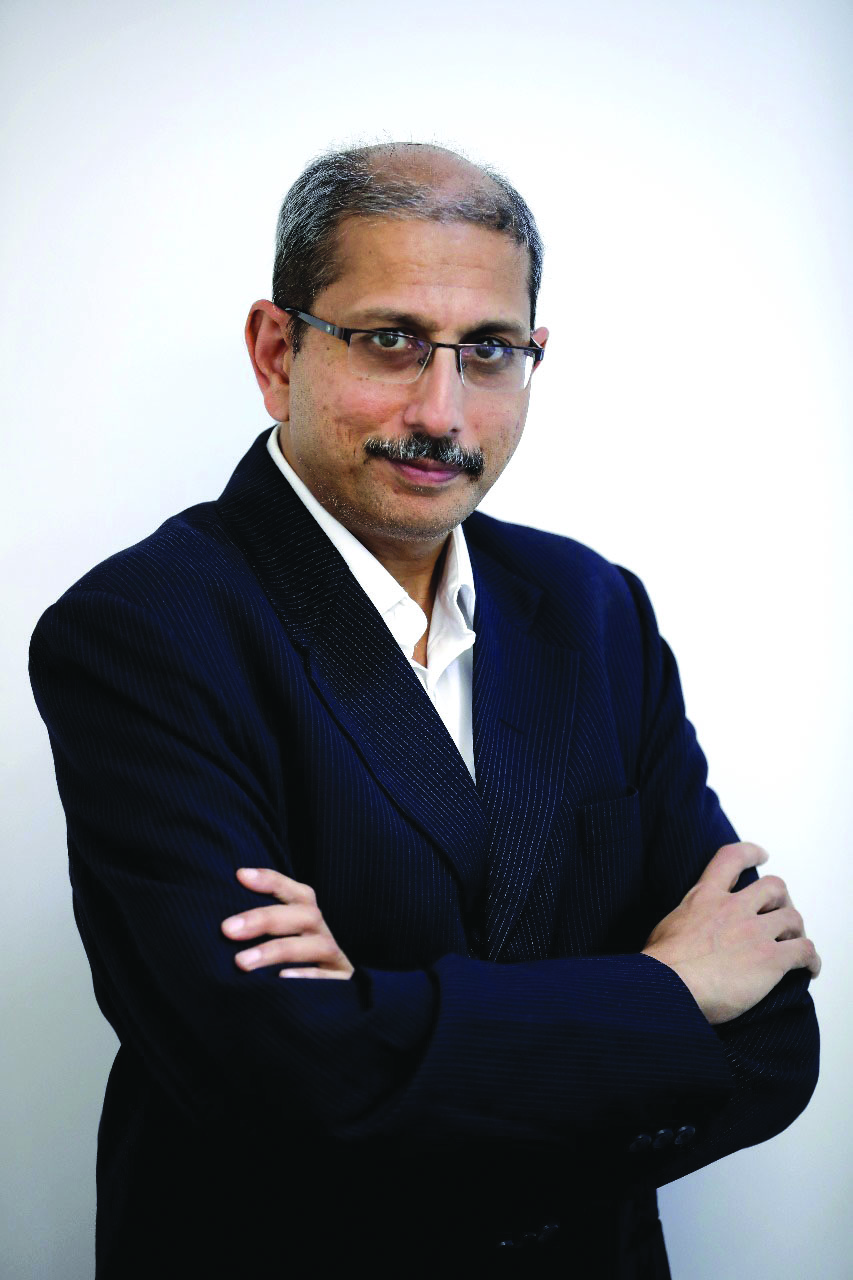
Rajagopalan: NEP 2020 silver lining
In light of the Covid-19 mismanagement and neglect of education in particular — remedial education initiatives to recover ground lost during almost two years of closure of academic institutions because of over-abundant caution, having been feeble — withdrawal from PISA 2022 to avoid the PISA 2009 debacle became inevitable. More so because the results of PISA 2022 were scheduled to be declared in December 2023, a few months before General Election 2024.
“This tendency to shy away from any kind of competitive exercise which confirms the poor state of affairs in India is nothing new. It has done this with PISA all the time since 2009. What is worrying is that the country has chosen to do the same with any other survey that may show up a not so sanguine state of affairs. Instead, many spokespersons for the government have resorted to bluster. They have even attempted to try to take the country back to the dark ages,” says R.N. Bhaskar, former editor of Business India and currently an author (Seven Strategic Advantages that could Steer India to Wealth (2019) and Gautam Adani: Reimagining Business in India and the World (2022)), educationist and researcher who publishes a popular current affairs blog (bhaskarr.substack.com). In support of the latter half of his statement, in his blog Bhaskar has republished several video clips uploaded by popular YouTube satirist Akash Banerjee, lampooning government ministers and MPs peddling mythology as science and history.
The Union government’s decision to opt out of PISA 2022 after making a firm declaration of Indian participation, has disappointed other well-informed educationists monitoring India’s flailing K-12 education system. “PISA 2022 offered an important opportunity for holding a mirror to ourselves, to measure the standing of our 15-year-olds against their counterparts by way of common, objective international testing. It’s a pity this opportunity was missed. Instead, the education ministry has introduced NAS testing. Although NAS has become rigorous over the years, domestic testing can’t substitute international assessment,” says Dr. Geeta Kingdon. An alumna of Oxford University and the London School of Economics, Prof. Geeta Gandhi Kingdon is chair of education economics and international development, University College London, and president of the City Montessori School, Lucknow (CMS, estb.1959), certified as the world’s largest city school by Guinness World Records (57,000 students, 2,196 teachers in 17 campuses).
Sridhar Rajagopalan, an alum of IIT-Madras and IIM-Ahmedabad and co-founder and chief learning officer of the Bengaluru-based Educational Initiatives Pvt. Ltd (estb.2001), a pedtech (pedagogy with technology) enterprise whose mission is to “create a systematic shift in the way teachers teach and students learn”, describes India’s decision to opt out of PISA 2022 as “unfortunate”. “This international triennial test for 15-year-olds is designed in consultation with all participating countries and the representative sample of students who write it is scientifically selected by PISA in consultation with participating governments to ensure that they represent a country or mutually agreed region within large countries. Given the prolonged closure of our schools because of the Covid pandemic, clearly the government felt our children were unprepared for PISA 2022. But with NEP 2020 having mandated competency-based education and board exam reforms, India will be better prepared for future PISA examinations, if this mandate is implemented,” says Rajagopalan.
Quite clearly, the Union government’s decision to rescind its resolve to participate in PISA 2022 was driven by fear that the PISA 2009 debacle would repeat itself, when the Indian sample of 5,000 students drawn from Tamil Nadu and Himachal Pradesh were ranked second last of 74 participant countries. Within government and the establishment, there’s belated awareness that early childhood and K-12 education — especially public schooling — has been neglected for over a century, first in British India and subsequently in independent India.
It’s all very well to forgive and forget in the warm glow of Raj nostalgia and the newly emergent Indo-British camaraderie. But the plain truth is that when the Brits exited India in 1947 in post-World War II panic after almost two centuries of exploitative rule glossed over by Western historians — for an accurate picture read Smoke and Ashes, Amitav Ghosh’s latest (2023) oeuvre which traces the roots of deep and enduring poverty and backwardness of present-day Bihar — a mere 16 percent of India’s population was literate and average longevity was 32 years.
Shockingly, even after independence, public — especially primary — education continued to be accorded low priority in free India.
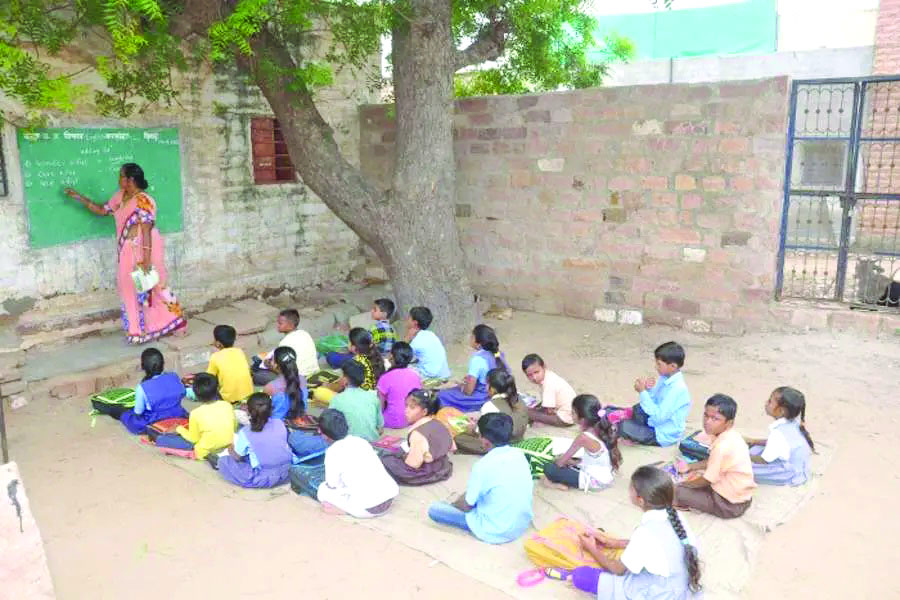
Government school children in Rajasthan: intelligentsia also blameworthy
Regular readers of EW are likely to be well-acquainted with this writer’s cause-and-effect analysis of this deplorable situation. Adoption of the inorganic Soviet inspired socialist model of development which canalised national savings into capital-intensive public sector enterprises that never earned adequate re-investible surpluses for investment in public education and health; simultaneous strangulation of private industry and business which reduced tax revenues to a trickle; and continuously rising establishment, defence and middle class subsidies.
Nor is the condition of public higher education any better. None of India’s 42,000 undergrad colleges or 1,126 universities — some of them of over 150 years vintage — are ranked among the global Top 200 in the annual league tables of the authoritative London-based university ranking agencies QS and THE. Unsurprisingly, according to some consultancies and recruitment companies (McKinsey and Aspiring Minds), 75 percent of engineering and 85 percent of arts grads of Indian higher ed institutions are unemployable in Indian and foreign multinationals.
Way back in 1967, the high-powered Kothari Commission strongly recommended annual allocation (Centre plus states) of 6 percent of GDP for public education. Although universally acclaimed, that target has never been achieved for the reasons outlined above, averaging a mere 3.5 percent. A schema/calculus routinely presented by your editors coterminously with the Union budget, which would enable the Central government to mobilise an additional Rs.7 lakh crore (cf. its 2023-24 allocation of Rs.1.12 lakh crore) for investment in public education and health has never received any response, even from top economists invited for debate/critique.
For the rock-bottom condition of Indian education, self-serving governments apart, the country’s feeble intelligentsia is also to blame. Despite a mountain of historical evidence worldover testifying that universal primary-secondary education of acceptable quality is the prerequisite of national development, within India’s burgeoning middle class including the intelligentsia, academia, business and industry, which has the option of private education for its progeny — 48 percent of in-school children are in private schools — there is pervasive indifference to public/government provided K-12 education, lending credence to the Marxist ideology that the bourgeoisie has a vested interest in mass illiteracy and poverty. It ensures availability of a vast pool of cheap labour.
Against this backdrop, the OECD/PISA methodology of selecting 15-year-olds from a cross-section of schools — including India’s government schools plagued with multi-grade teaching, chronic teacher absenteeism and rock-bottom learning outcomes — to write PISA is certain to lead to disaster. In the circumstances, the Union education ministry’s last-minute decision to opt out of PISA 2022 was perhaps prudent. With General Election 2024 a mere four-five months away, it would have reflected badly on the BJP which has been ruling in New Delhi and several state capitals since 2014, if Indian high schoolers were ranked #80 out of students from 81 countries who wrote PISA 2022.
Yet the government and establishment can’t fool all people all the time. Post-independence India’s neglect of education is manifesting in all walks of life — low industrial and agriculture productivity, rising unemployment, spreading crime and violence, pathetic civic management. And rising illegal emigration. The best available option is to join with us in our non-negotiable campaign to make education the #1 item on the national development agenda. And this campaign has to succeed sooner than later lest India’s demographic dividend — the world’s largest child and youth population — transforms into a demographic disaster.
PISA assessment & ranking methodology
Some apologists of the BJP government at the Centre cite alleged western bias of the triennial transnational PISA as the reason for India having opted out of PISA 2022 at the last minute. However, the Directorate of Education and Skills, OECD takes great pains to ensure that the PISA test offers a level competitive platform to students from all countries.
Students are selected after a two-stage sampling process. First, a representative sample of at least 150 schools is chosen from urban and rural areas. Next 42 fifteen-year-old students are randomly selected from each school to write the assessment test. Most countries assess between 4,000-8,000 15-year-olds. This strict sampling criteria ensures that the teens who write the test are representative of the national population of 15-year-olds in every participant country. “By providing an opportunity for countries to learn from each other, PISA has developed into an influential force for education reform. PISA has helped policy makers lower the cost of political action by backing difficult decisions with evidence — but it has also raised the political cost of inaction by exposing shortcomings in policy and practice. This aids the development of education systems to deliver high-quality instruction and equitable learning,” says a PISA statement.
Subject-matter experts, practitioners and policy makers from participating countries work together to build consensus on which subjects learning outcomes are assessed and how to best measure them across countries and cultures, and to find ways to compare the results meaningfully and reliably. OECD’s Directorate of Education & Skills co-ordinates this multinational effort and works with countries to interpret results and compile the reports. “PISA 2022 was the eighth round of the assessment since it was launched in 2000. Every PISA test assesses students’ knowledge and skills in mathematics, science and reading, and focuses on one of these subjects and provides a summary assessment of the other two. In 2022, the focus was on mathematics,” says Andreas Schleicher, Director (Education & Skills) of OECD.
Why Singapore topped PISA 2022
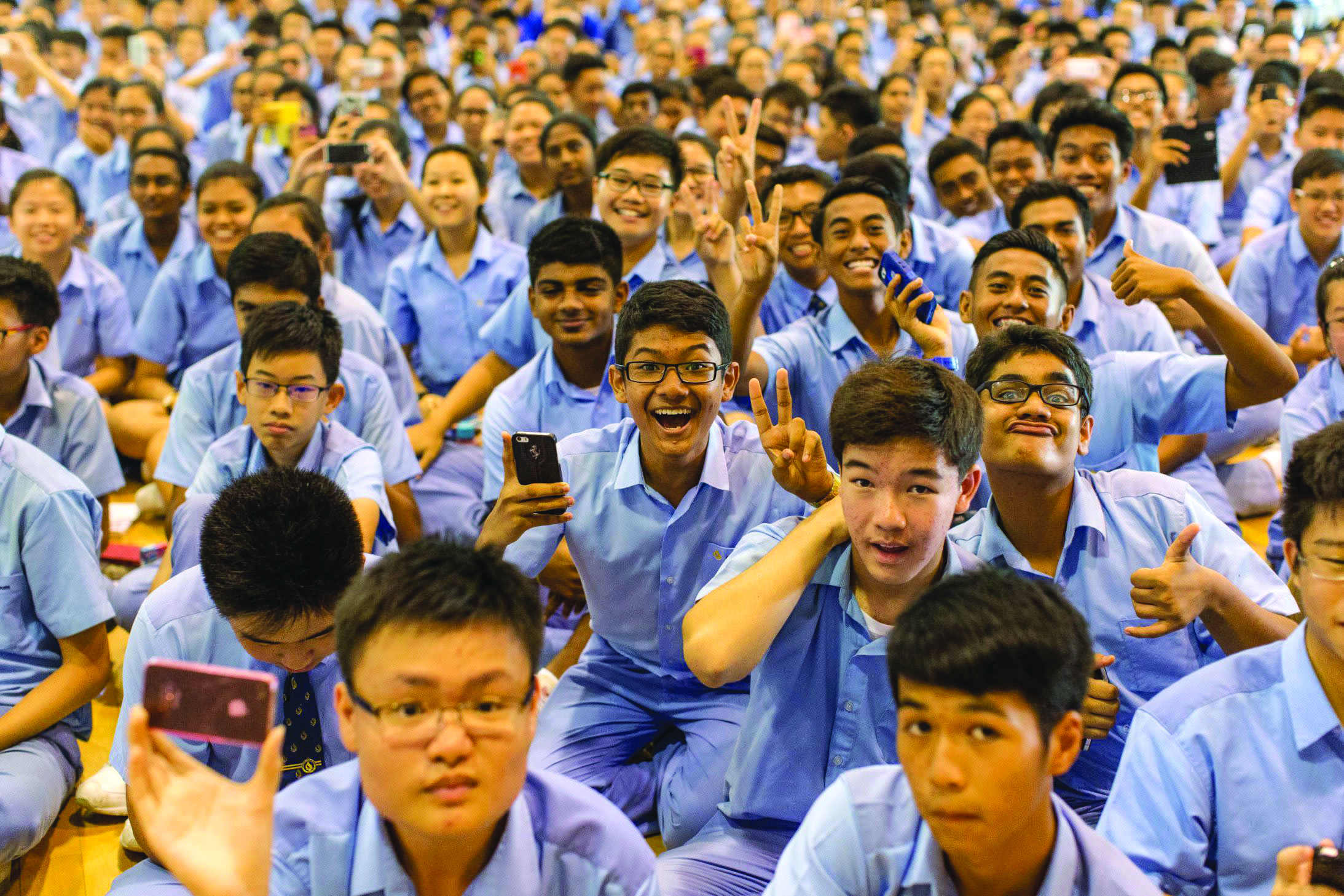
Singapore 15-year-olds
The island nation of Singapore (pop.5.4 million) is ranked #1 in PISA 2022, results of which were declared last month. Since it participated for the first time in PISA 2009 (same year India participated for the first and only time), its 15-year-olds have consistently improved their performance in reading, science and mathematics. From being ranked #5 in 2009, Singapore has climbed up to #1 position in PISA 2022 which focused on mathematics, with reading and science as minor subjects.
In all three subjects, Singapore’s mean performance was higher than in 2009. In PISA 2022, 92 percent of students attained at least Level 2 proficiency in mathematics (OECD average: 69 percent), 89 percent attained Level 2 or higher in reading (74 percent) and 92 percent attained Level 2 or higher in science (76 percent).
The elaborate PISA 2022 results highlight some facts which have propelled Singapore to #1 position. Excerpts:
Support and discipline in mathematics lessons. In Singapore, 77 percent of students reported that, in most mathematics lessons, teachers showed interest in every student’s learning (OECD average: 63 percent), and 86 percent said teachers provide assistance when students need it (70 percent).
Feeling safe at and around school. PISA 2022 data shows that in Singapore students feel safer and less exposed to bullying and other risks in their schools. Only 3 percent of students reported not feeling safe on their way to school (OECD average: 8 percent); 4 percent reported not feeling safe in classrooms (7 percent); 7 percent of students reported not feeling safe at other places at school (e.g, hallway, cafeteria, restroom) (10 percent).
Parental involvement in learning. In 2022, 24 percent of students in Singapore were in schools where principals reported that during the previous academic year at least half of all families discussed their child’s progress with a teacher on their own initiative (and 83 percent on the teacher’s initiative).
Resources invested in education. In Singapore, the cumulative expenditure per student between ages 6-15 is equivalent to about USD 166,100 (PPP) cf. India’s 1,575 (2021-22).
How students’ progress through schooling. When they wrote PISA in 2022, 93 percent of 15-year-old students in Singapore were enrolled in 10th grade (OECD average 90 percent).
In Singapore, 99 percent students reported that they had attended pre-primary education for one year or more (OECD average: 94 percent). On average across OECD countries, students who had attended preschool for one year or more scored higher in mathematics at the age of 15 than students who never attended or who had attended for less than one year.
School autonomy. In Singapore, 20 percent of students attended schools where principals had the main responsibility for hiring teachers (OECD average: 60 percent), and 77 percent were enrolled in schools where teachers had the main responsibility for choosing which learning materials are used (76 percent). Many high-performing school systems entrust principals and teachers with these responsibilities.
NB: In PISA 2018, China (Shanghai) was ranked #1 overall across reading, maths and science. In PISA 2022, with China (Shanghai opting out), Singapore, China (Macau), China (Hong Kong) and China (Taipei) are ranked among the Top 5. All these countries are dominated by people of Chinese ethnicity.
(Source: www.oecd.org)
Within India’s burgeoning middle class which has the option of private education, there is pervasive indifference to public/government provided K-12 education
Singapore lesson unlearned
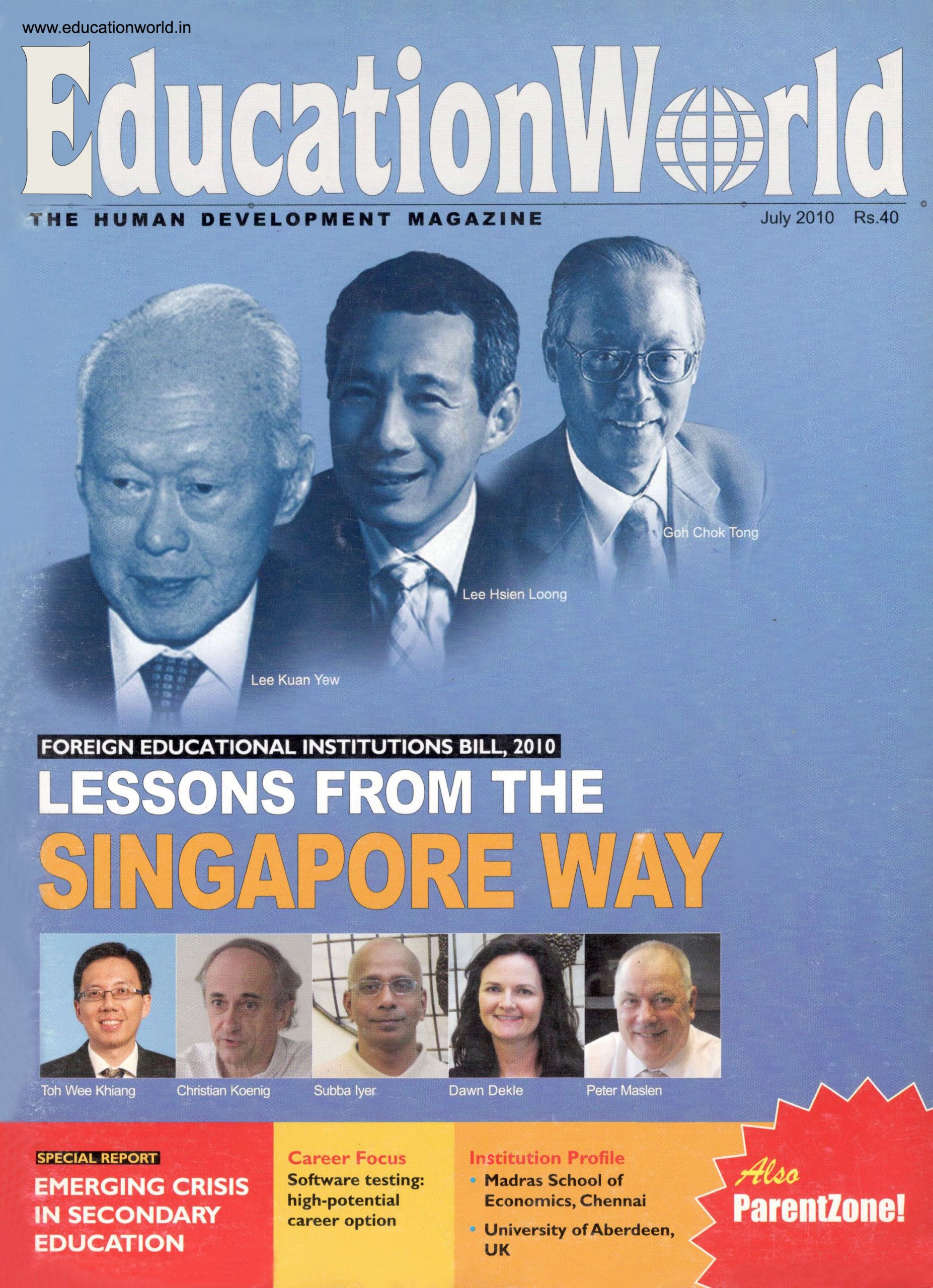 In 2010, when the Foreign Educational Institution (Regulation of Entry & Operations) Bill, 2010 was tabled in Parliament, your editors travelled to Singapore to investigate the causative factor behind the island Republic of Singapore having emerged as a hub of world-class education. Excerpts from our cover story of July 2010 (https://www.educationworld.in/educationworld-archive/?_sfm_archive_year=2010)
In 2010, when the Foreign Educational Institution (Regulation of Entry & Operations) Bill, 2010 was tabled in Parliament, your editors travelled to Singapore to investigate the causative factor behind the island Republic of Singapore having emerged as a hub of world-class education. Excerpts from our cover story of July 2010 (https://www.educationworld.in/educationworld-archive/?_sfm_archive_year=2010)
“In his remarkably candid memoir From Third World to First — The Singapore Story 1965-2000 (Harper Collins, 2000), Dr. Lee Kuan Yew, the founding father of modern Singapore, recounts his version of the quick passage of Singapore from developing to developed nation status, in a chapter titled ‘Nurturing and attracting talent’. Lee narrates how the first PAP government of independent Singapore built upon ‘the good fortune that under the British, Singapore had been (developed) as a regional centre for education’. ‘It has taken me some time to see the obvious, that talent is a country’s most precious asset. For a small resource-poor country like Singapore, with two million people at independence in 1965, it is the defining factor,’ he writes in his engaging memoir.
For the purpose of encouraging the inflow of investment, entrepreneurs and skilled professionals — and of education institutions — into post-independence Singapore, the Lee government reactivated and re-energised the island’s Economic Development Board (EDB), established by the colonial government in 1961. In the initial years after independence, EDB’s main task which it discharged with exemplary efficiency — the Lee government was pronouncedly free enterprise-oriented and had few of the pro-Soviet ideological hang-ups which crippled economic development in post-independence India — was to deliver trained technical manpower to the large number of foreign companies attracted to Singapore with its low corporate and personal income tax regime. Back in the early 1970s in collaboration with corporates including the Tata Group (India), Rollei (Germany) and Philips (Holland), EDB established vocational schools christened Joint Government Training Centers to expand the pool of skilled technical manpower.
In 1997 in collaboration with the education ministry, the board launched its World Class Universities programme and the Global Schoolhouse Initiative in 2002 ‘to develop Singapore as a world-class education hub offering a diverse and distinctive mix of local and international quality services’.
Quite obviously, the island republic’s strategy under which EDB identifies, invites and facilitates the entry of blue-chip universities and higher education institutions has paid off. Currently, Singapore boasts 16 globally-respected universities and B-schools including INSEAD, Digipen Institute of Technology, Duke University, German Institute of Science and Technology, Waseda University, Shanghai Jiao Tong, S.P. Jain Institute of Management and Research, Mumbai, and the Jamnalal Bajaj Institute of Management Studies, Mumbai, among others, who have established campuses in the country. Their presence has drawn over 90,000 foreign students from Asia and around the world to the city state…
However, it’s pertinent to note that quite logically, the education development and upgradation initiatives of the Singapore government and the EDB in particular, are sector agnostic. Therefore the city state boasts 22 globally benchmarked international schools — including the United World College, Anglo-Chinese International and Canadian International schools affiliated with highly reputed examination boards including the International Baccalaureate Organisation, Geneva and the Cambridge International (UK).
Indeed presumably driven by the same logic, Singapore is currently experiencing a boom in early childhood education with high quality preschools mushrooming in all neighbourhoods. This perhaps explains why the hitherto US-based Knowledge Universe Learning Group which owns over 1,800 KinderCare and New Beginnings preschools in 39 states across the US, and 132 Busybee brand preschools in the UK, took a momentous decision to move its global headquarters to Singapore in 2007.















